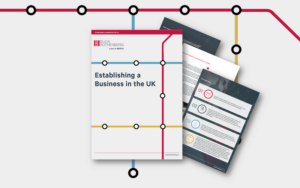Spotlight On: Research & Development Tax Credits for SMEs
Could your business benefit from a cash repayment of £33.35 for every £100 of qualifying expenditure incurred? Neil Insull explores the Research & Development (R&D) Tax Credits for small and medium-sized enterprises (SMEs)
Could your business benefit from a cash repayment of up to £33.35 for every £100 of qualifying expenditure incurred?
Why is it relevant?
Although not new, R&D relief for SMEs remains one of the most generous forms of Government funding. Aimed at innovative businesses, the relief offers either tax credits (with HM Revenue & Customs paying cash to the company) or reduces a Corporation Tax liability. However, it is still widely misunderstood and as a result remains underutilised.
R&D relief is available to a wide range of industries, including companies in the proptech, fintech and biotech sectors. We have also seen many successful claims made by businesses in retail, hospitality, manufacturing, construction, and architecture, among others.
Who is it relevant to?
Innovative companies undertaking R&D activities.
What do you need to know?
A company qualifies for relief when it undertakes a project that seeks an advance in science or technology, through the resolution of uncertainty. Such uncertainty exists when knowledge of whether something is possible or feasible, or how to achieve it in practice, is not readily available or deducible by a competent professional working in the field.
While this may sound like a high bar to overcome, many more activities and projects fall within the definition of R&D than you might expect, and the relief is not only for large pharmaceutical or technology companies.
Often part of a commercial project will involve technologically innovative work, and this part can be viewed separately within the larger project, eligible for R&D relief in its own right.
R&D relief for SMEs is calculated on the amount of qualifying R&D expenditure that the company has incurred. The relief gives a tax deduction equal to 230% of the qualifying R&D expenditure.
Where this enhanced tax deduction results in a tax loss or an increased tax loss , the company can surrender those losses to HMRC, up to a maximum of the enhanced deduction, in exchange for a 14.5% cash payment. This corresponds to a cash payment of up to £33.35 for every £100 of qualifying expenditure incurred, meaning the tax authorities are funding one third of your R&D costs.
However, for accounting periods beginning on or after 1 April 2021 and subject to potential exemptions, the amount of the tax credit is capped to £20,000 plus, in broad terms, 300% of the company’s PAYE and NIC liability.
If the PAYE cap applies or the tax credit is not claimed, the enhanced tax loss is carried forward to offset future taxable profits, resulting in tax relief of up to £43.70 for every £100 of qualifying expenditure incurred.
Would you like to know more?
Do you believe your business or a commercial project you’re involved in could qualify for R&D relief?
You can find further details on what costs qualify for R&D relief and how to make a claim here.
Or if you would like to discuss your specific situation, please get in touch with your usual Blick Rothenberg contact or Neil Insull using the details below.
Contact Neil

You may also be interested in

Self’s assessment: Budget changes to the HICBC

Non-domicile changes – Trust protection










